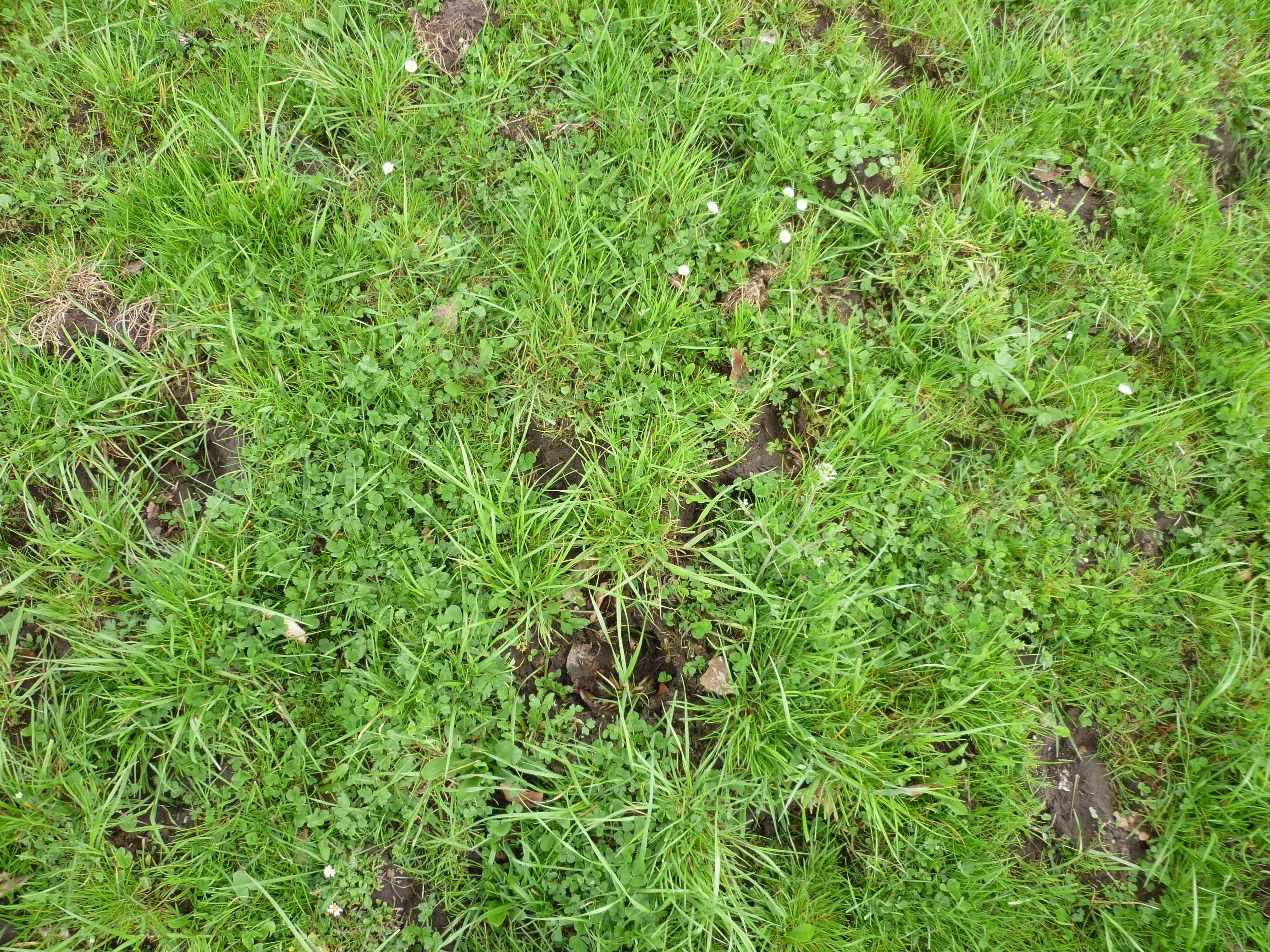If you start converting meadows into permanent pastures, gaps arise in the plant population because typical meadow grasses cannot withstand grazing. If there are not enough pasture-tolerant plants available, these gaps can be colonized by unwanted grasses and herbs. This development subsequently leads to a reduction in the quantity and quality yield on the area. It is not intensive grazing that is to blame for this situation, but rather the lack of suitable pasture plants. During the transition phase from a hay meadow to a permanent pasture or when renovating existing permanent pastures, it is advisable to carry out accompanying overseeding that steers the crop in a desired direction and thus guarantees optimal yields and qualities. Overseeding pastures is easy to do and requires little use of machinery. A prerequisite for this is that the crop has been eaten very well and there is enough open ground visible. The grass seeds must fall to the ground in order for them to germinate. Choosing the right seeds is crucial for successful overseeding. The most important pasture grass in the Central European climate region is the meadow bluegrass. It forms strong underground runners and contributes significantly to the development of a stable and dense turf. Since this grass is primarily intended to be promoted, it is advisable to only use meadow bluegrass seeds for overseeding.
Suitable meadow bluegrass varieties are LATO, RHENUS, NIXE, LIKOLLO, ADAM 1 or BALIN (Attention! Organic farms must submit an application to the inspection body before sowing when using conventional individual grass components. The seeds may only be spread after the approval.). If rapid success is to occur, it is recommended to carry out 2-3 overseedings in one year and, if necessary, in another year. Depending on the gap, 5-10 kg of seeds per ha are required for overseeding. In very favorable locations (e.g. Alpine foothills) 2-4 kg/ha of English ryegrass (varieties GURU or IVANA) can be added. It is usually not necessary to additionally sow white clover as it grows rapidly in permanent pasture thanks to the above-ground creeping shoots. If companies would like to use ready-made overseeding mixtures, pasture mixtures are available on the market which only consist of the components meadow bluegrass, English ryegrass and, optionally, white clover.
The easiest way to sow seeds is to use a fine seed spreader. The meadow bluegrass is a light germinator and must not be placed in the ground. With English ryegrass, the depth of placement is less important. The surface placement of the seeds and a good soil connection for germination are crucial for successful growth. To do this, the animals hit the sown pasture area immediately after sowing and press the seeds to the ground with their claws. The sown area can continue to be grazed. The existing plant population is kept short and competition for the growing seedlings is minimized. The damage caused by grazing animals to the seedlings is limited because the young plants lie outside the bite height for a long time and react tolerantly to being kicked.
Favorable sowing times vary regionally. Regular rainfall after sowing is crucial. The last sowings should be done at the end of August or beginning of September (in favorable locations). For later seeds, the development period until the onset of winter is too short.
Examination results:
As part of a pasture study, the success of overseeding with bluegrass on a short-grass pasture was tested. For this purpose, an area was grazed with young cattle in 2008 and 2009. In 2008, meadow bluegrass of the BALIN variety was overseeded on three occasions and 10 kg/ha of seed was used per appointment. Every spring (2008, 2009 and 2010) the plots were assessed and the percentage of plants recorded. A clear effect of overseeding could be observed. In the variant with overseeding, the meadow bluegrass reached 27% and was therefore 10% higher than in the variant without overseeding. As can be seen in the two figures, there was a change not only in the meadow bluegrass but also in other species. This change in the plant population is due to the fact that an area previously used as a cutting meadow was grazed for this experiment.
Figure 1: Pasture variant with meadow bluegrass overseeding
Figure 2: Pasture variant without meadow bluegrass overseeding






